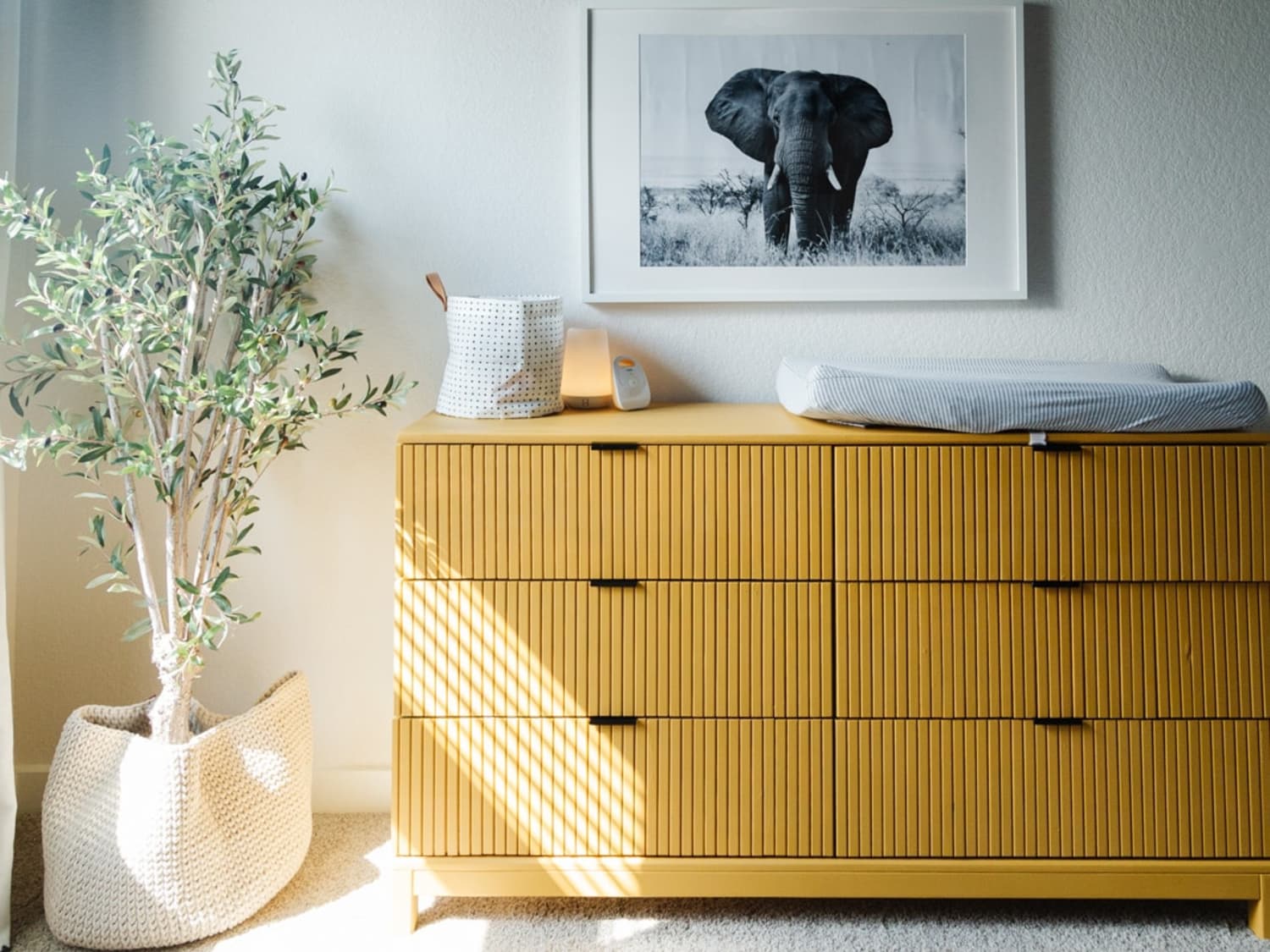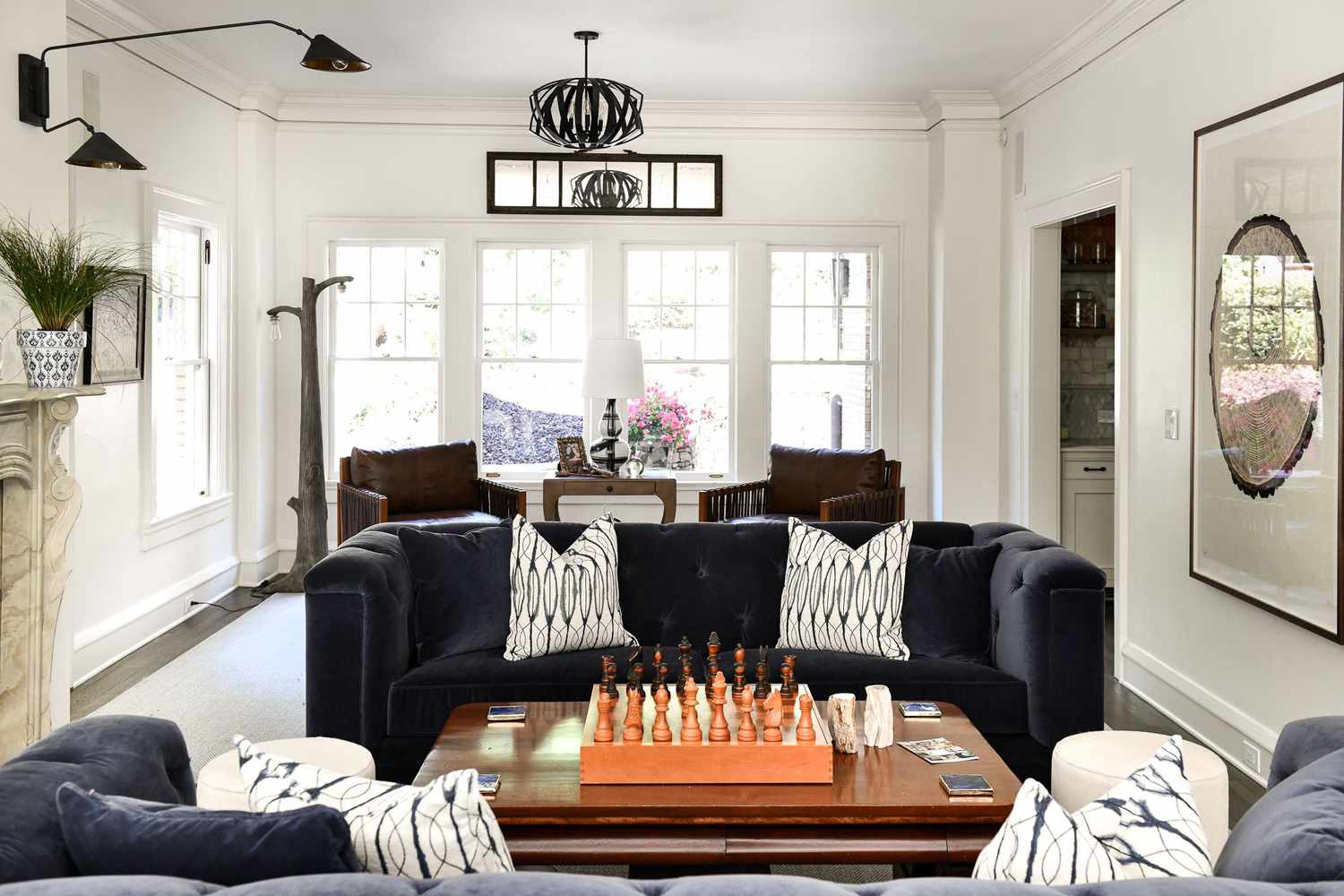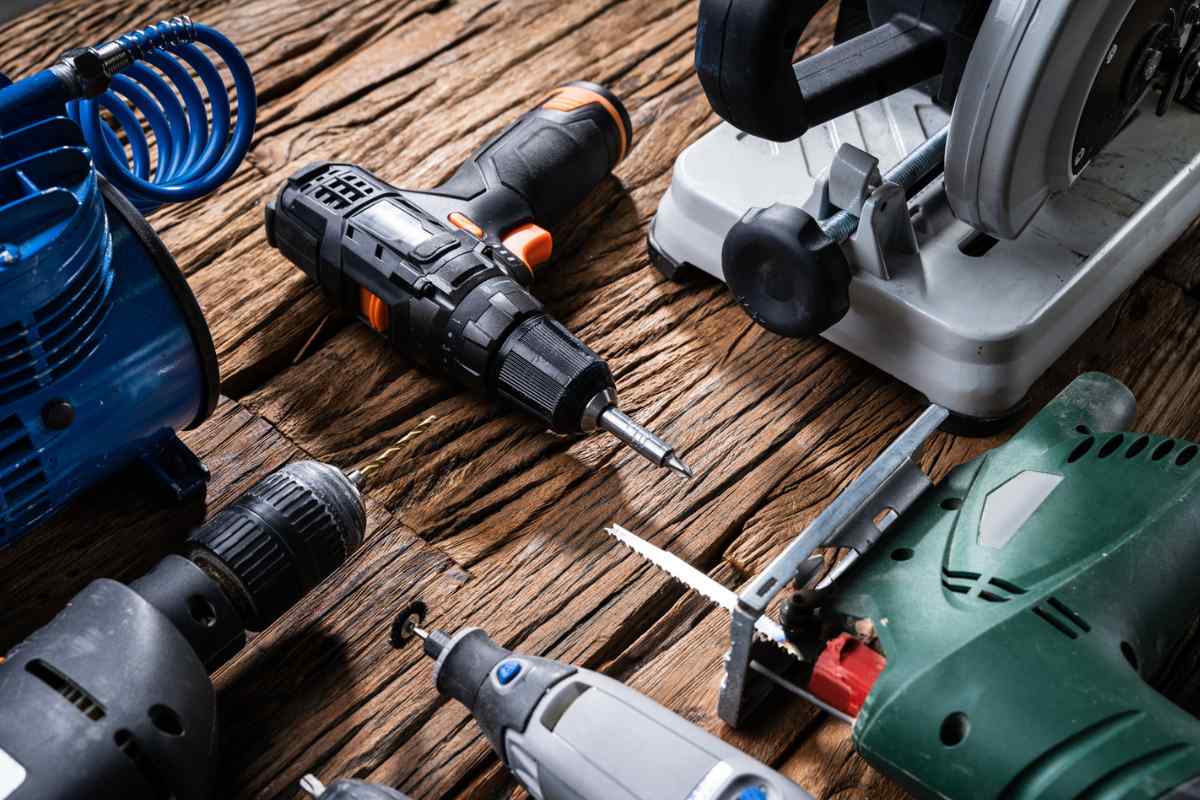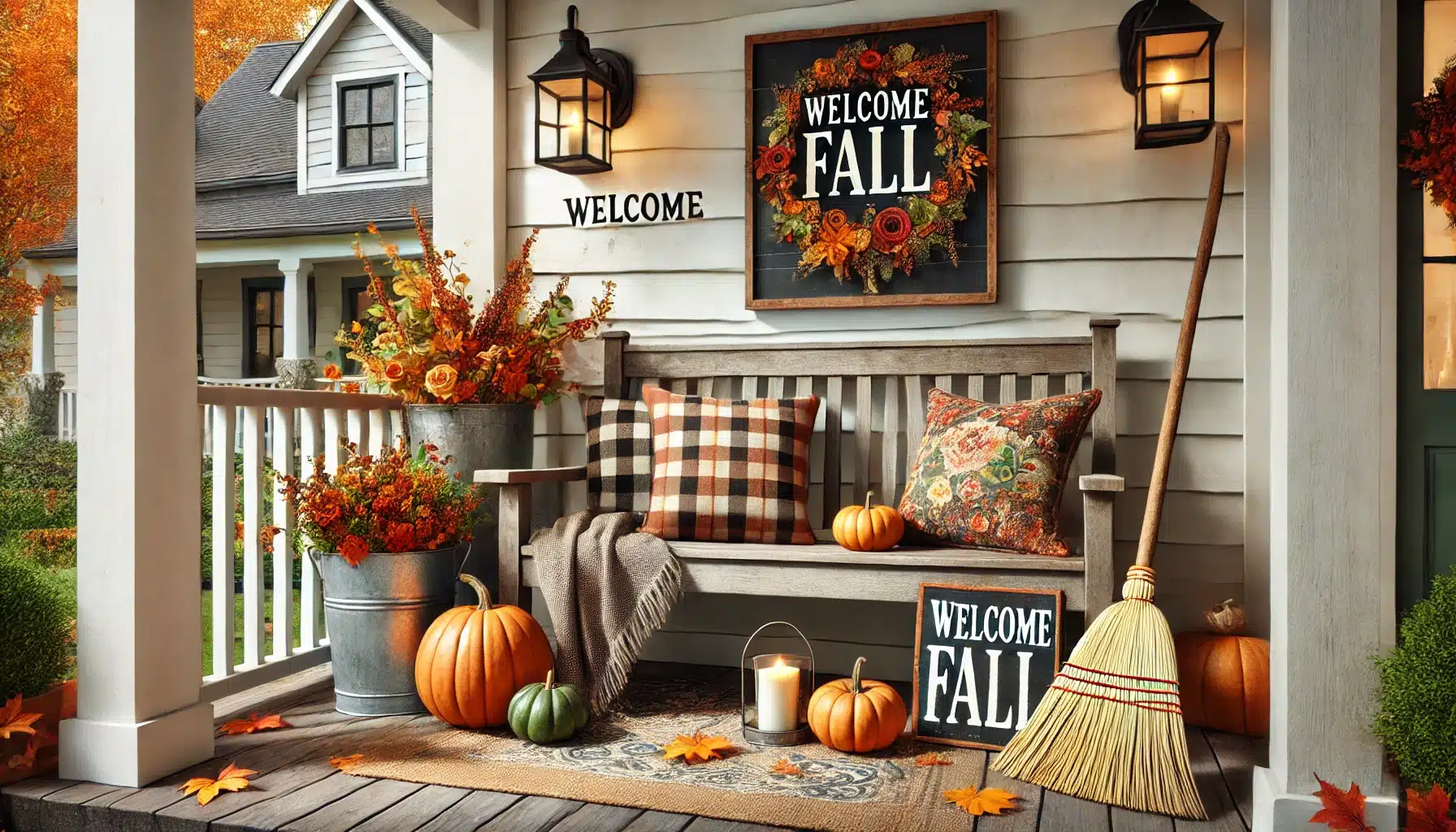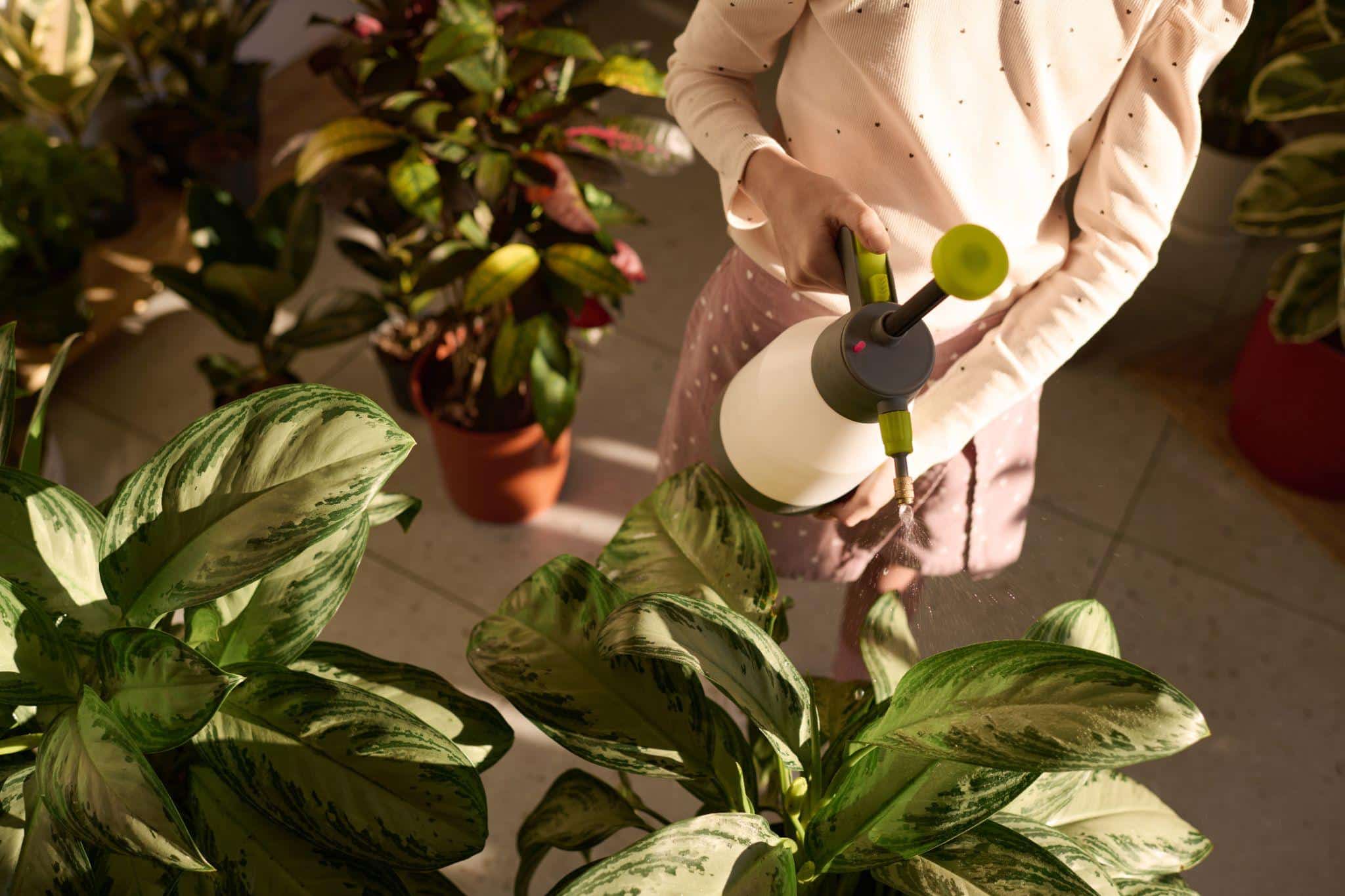How to Make a Fluted Cabinet Doors DIY
Are you tired of plain cabinet doors in your kitchen? I know that feeling. When I first started working with cabinets, my kitchen looked just like everyone else’s on the block.
That’s when I learned about fluted cabinet doors. These textured beauties add depth to any kitchen space. But here’s what most people don’t know – you can make them yourself!
I’ve spent years working on cabinet projects, and I’m here to share my step-by-step method for creating fluted cabinet doors. Trust me, it’s simpler than you might think.
In this guide, I’ll walk you through the entire process, from picking materials to finishing touches.
What are Fluted Cabinet Doors & It’s Benefits
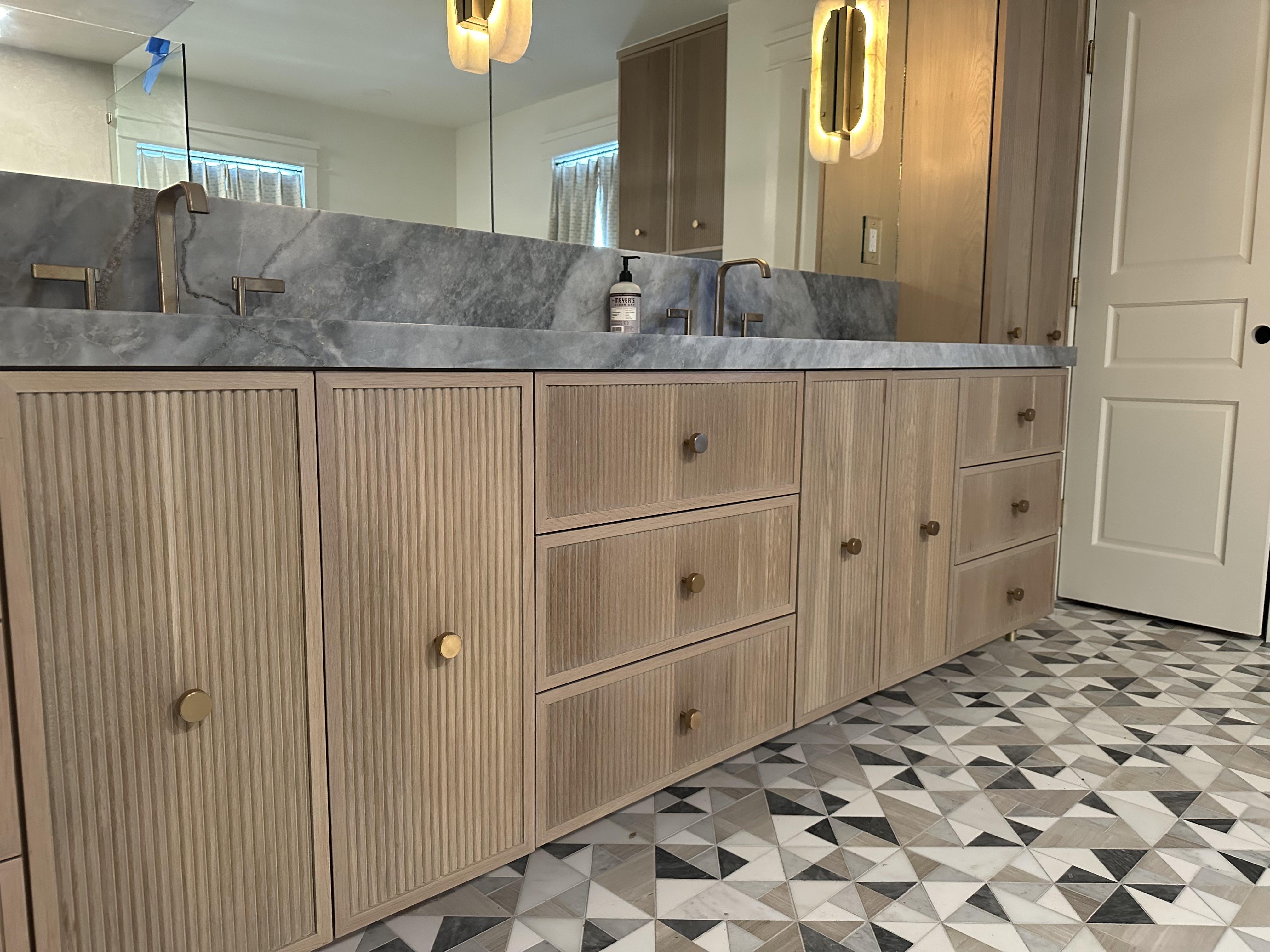
Fluted cabinet doors feature vertical grooves carved into solid wood or MDF panels, creating a pattern of raised and lowered lines across the door’s surface.
I’ve found that these grooves typically run parallel to each other, spaced evenly to form a pleasing visual pattern that catches both light and attention.
From my work with different cabinet projects, I can tell you the benefits are quite practical:
- Enhanced Visual Depth: The grooves create shadows and highlights that make your cabinets stand out. Through my remodeling projects, I’ve seen how these subtle patterns bring life to otherwise flat kitchen spaces.
- Better Grip Surface: The textured surface gives you a natural grip area. Parents of small children especially appreciate this feature in my experience, as it makes opening and closing cabinets easier for little hands.
- Customization Options: You can adjust the spacing and depth of the flutes to match your style. I’ve helped clients create everything from subtle, narrow grooves to bold, wider patterns.
- Increased Home Value: Quality cabinet details matter to buyers. When I talk to real estate agents, they often mention how unique cabinet features like fluting can set a home apart in listings.
- Simple Maintenance: The vertical lines actually help hide minor scratches and wear. I’ve noticed that cabinets with fluting tend to maintain their good looks longer than flat-panel doors.
- Sound Absorption: The grooved surface helps reduce kitchen noise. This might seem minor, but I’ve had many clients comment on how their kitchens feel quieter after installing fluted doors.
How to Make a Fluted Cabinet Doors
Tools & Materials Required
- Benjamin Moore Paint (Advance line, semi-gloss finish)
- Paint brushes and rollers
- Pole wrap material
- Exacto knife or circular saw
- Carpenter’s wood glue
- Multiple clamps
- Brad nailer with 1/2 inch nails
- Wood filler
- Drywall T-square
- Pencil
- Polyurethane sealant (Benjamin Moore Stays Clear Acrylic)
- Plywood for top piece (optional)
Step-by-Step Process to Create This
1. Surface Preparation
- Patch any holes in the cabinet doors
- Clean surfaces thoroughly
- Sand if needed
2. Pole Wrap Application
- Roll out the pole wrap material
- Measure and mark your door dimensions
- Cut pole wrap using either exacto knife or circular saw
- Apply wood glue to door surface
- Place pole wrap carefully, aligning corners
- Clamp firmly in place
3. Side Pieces
- Measure and cut pole wrap for sides
- Apply wood glue
- Attach pieces
- Allow to set for 20 minutes
- Remove clamps
4. Finishing
- Use brad nailer with half-inch nails
- Fill nail holes with wood filler
- Apply polyurethane coating for protection
- Let dry completely (24 hours recommended)
- Add plywood top piece if desired
Approximate Cost Required to Create Fluted Cabinet Doors
| Category | Item | Cost Range (Per Door) |
|---|---|---|
| Materials | Basic fluted panel | $50 – $75 |
| Mid-grade wood | $100 – $150 | |
| Premium hardwood | $200 – $300 | |
| Paint/Stain | $30 – $50 | |
| Hardware | $15 – $40 | |
| Labor (If Hiring) | Professional installation | $75 – $150 |
| Custom design work | $100 – $200 extra | |
| Finishing services | $50 – $100 | |
| Total Cost | DIY | $100 – $400 |
| Professional | $250 – $800 |
Note: These prices reflect my market research from 2024. Your local costs might vary.
Fluted Cabinet Types & Its Customization Options
1. Traditional Vertical Fluting
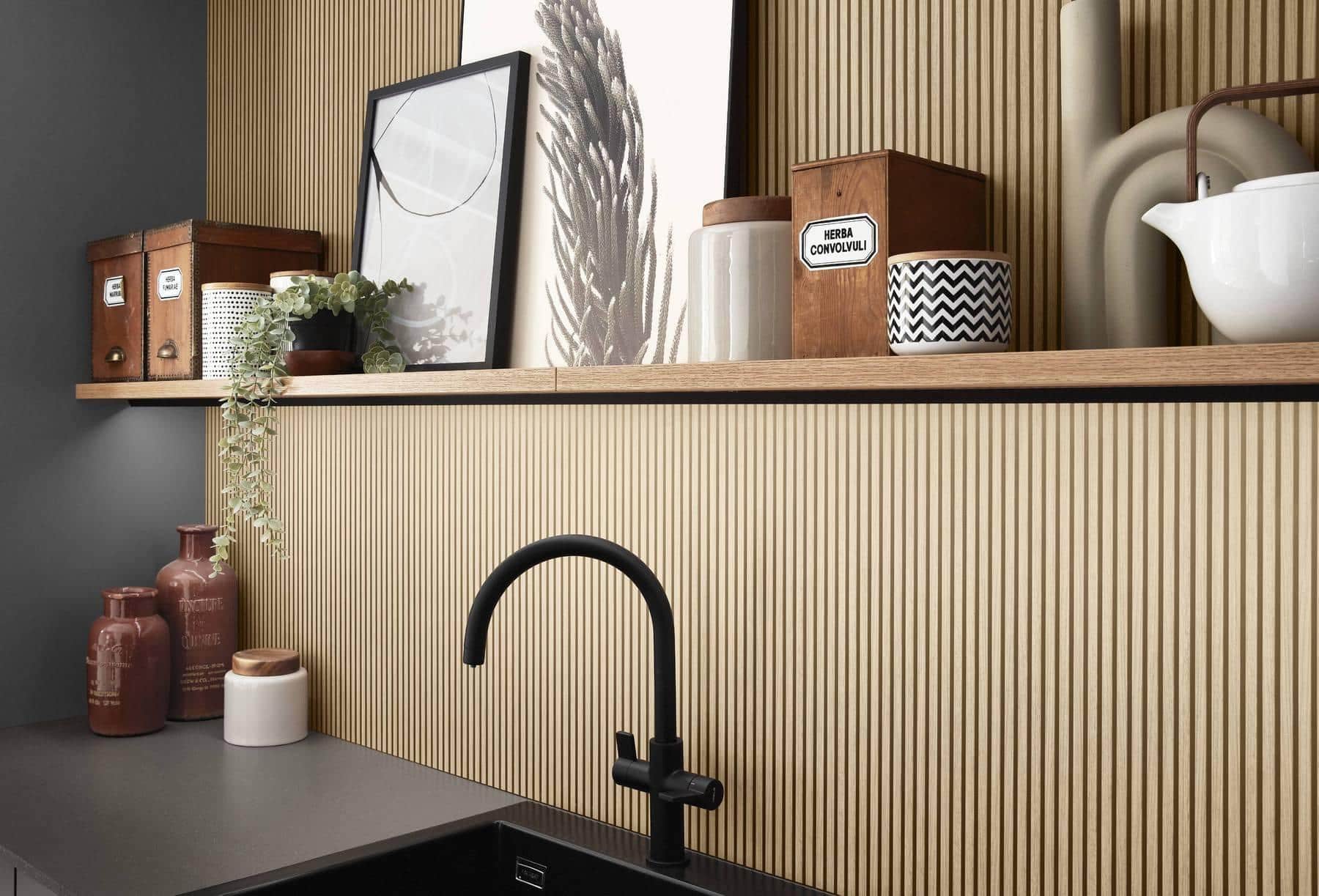
This style features straight up-and-down grooves spread evenly across the cabinet face. From my personal projects, I’ve found this pattern works well in both modern and classic kitchens, offering a timeless look that fits many home styles.
2. Diagonal Fluting
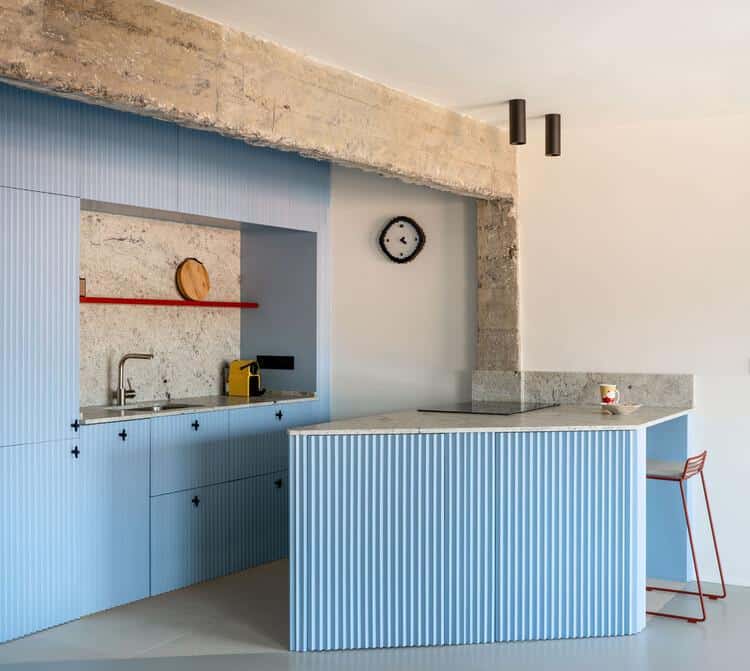
The grooves run at an angle across the cabinet face. When I’ve installed these in client homes, I’ve noticed how they create an interesting visual flow, making kitchens feel more open and drawing the eye through the space.
3. Mixed-Width Fluting
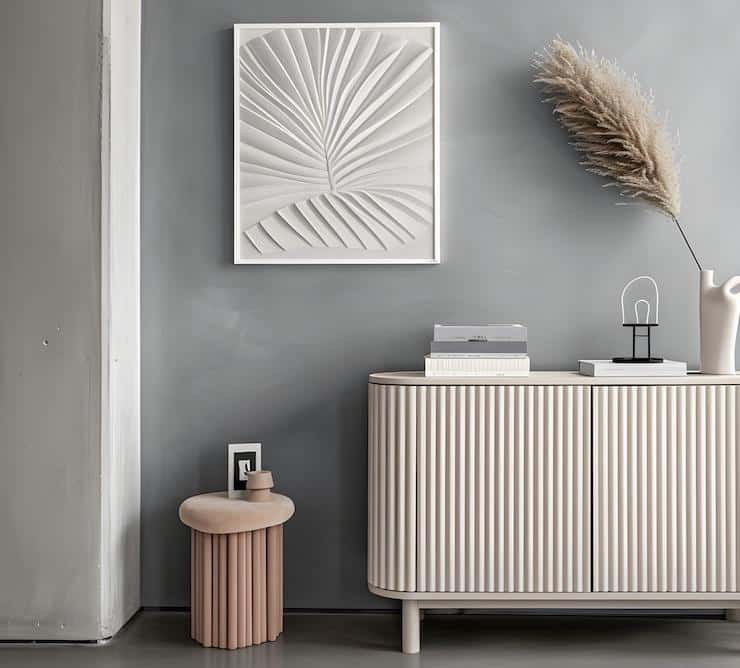
This design combines wider and narrower grooves. I often suggest this style to clients who want something unique but not overwhelming, as it adds interest while maintaining sophistication.
Customization Options to Explore
- Groove Spacing: I can adjust the space between flutes from 1/4 inch to several inches apart. Through my work, I’ve learned that wider spacing creates a bold statement, while closer grooves offer a more subtle texture.
- Depth Variations: The grooves can be shallow or deep. In my experience, deeper grooves create stronger shadows and more visual impact, while shallow ones provide a gentler effect.
- Pattern Combinations: We can mix vertical fluting on some cabinets with flat panels on others. I’ve helped many clients create unique looks by using fluting as an accent rather than covering all cabinets.
- Paint or Stain Options: The fluted surface takes both paint and stain beautifully. When I work with natural wood, the fluting highlights the grain patterns, while painted surfaces showcase the light and shadow play.
- Size Adjustments: The width of fluting can be customized to match your cabinet size. I often adapt the pattern scale to ensure it looks balanced on both large and small cabinet doors.
- Wood Selection: Different wood types create distinct effects. Oak shows strong grain through the flutes, while maple provides a smoother look. I always help clients choose based on their desired outcome.
Where to Buy Fluted Cabinet Doors
1. Local Cabinet Shops: I’ve built strong relationships with local cabinet makers over the years. These skilled craftspeople often create custom fluted doors to your exact specifications. Local shops typically offer:
- Face-to-face consultations
- Sample pieces to touch and feel
- Quick fixes if needed
- Local delivery options
2. Online Retailers: Many internet-based companies now sell fluted cabinet doors. I’ve ordered from several trusted online sources that provide:
- Detailed product photos
- Clear pricing structures
- Size customization tools
- Material samples by mail
- Shipping across states
3. Home Improvement Stores: Large retailers like Home Depot and Lowe’s stock fluted cabinet doors. From my shopping experience, they offer:
- In-store displays
- Basic customization options
- Regular sales and discounts
- Professional installation services
- Return policies
4. Cabinet Manufacturers: Direct factory orders are another option I’ve explored. These companies focus solely on cabinets and provide:
- Wide style selections
- Bulk order discounts
- Quality guarantees
- Technical support
- Detailed spec sheets
5. Custom Woodworkers: I’ve worked with many independent woodworkers who make fluted doors. They excel at:
- One-of-a-kind designs
- Premium wood selection
- Hand-crafted quality
- Personal attention
- Design flexibility
Best Design Inspiration Ideas to Consider
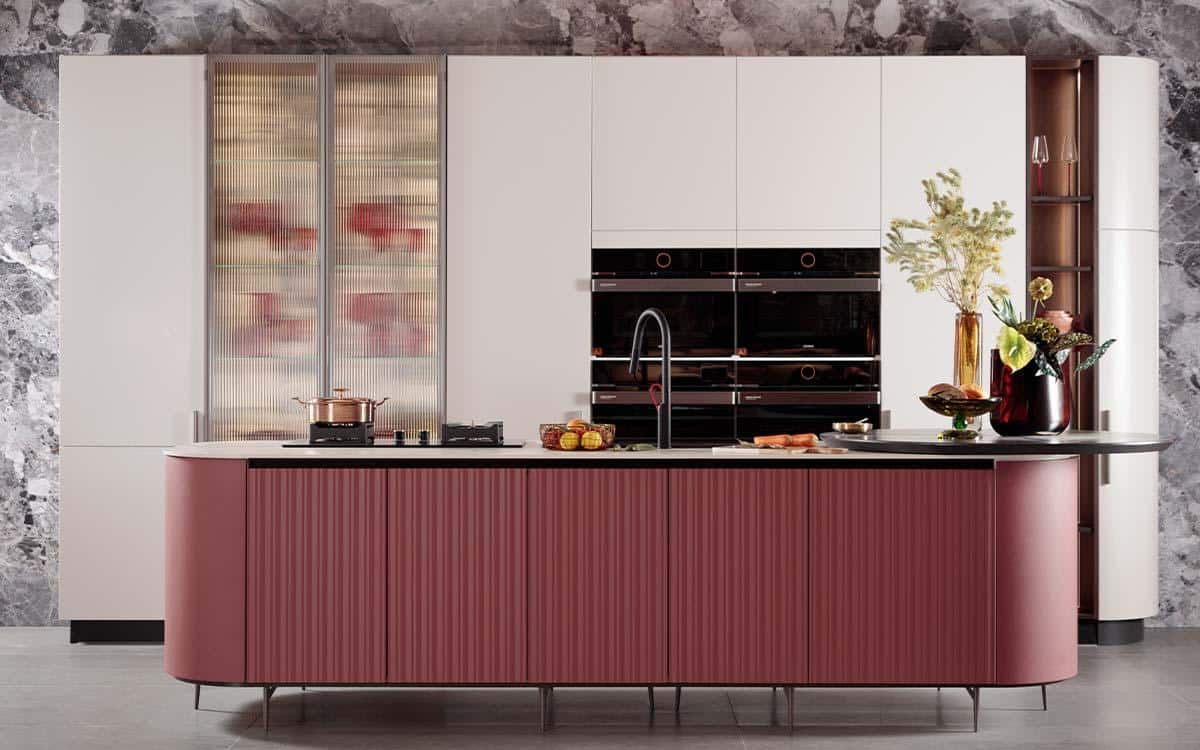
Kitchen Island Focus
I’ve found that adding fluted panels to kitchen islands creates a stunning centerpiece. The method I often use includes:
- Wrapping all sides of the island with fluted panels
- Adding corner details where panels meet
- Matching the fluting pattern to the room’s scale
- Using light fixtures that cast shadows on the grooves
Mixed Material Combinations
Through my design work, I’ve learned that combining materials makes fluted cabinets stand out:
- Wood fluting with glass upper cabinets
- Metal hardware against textured surfaces
- Stone countertops that complement the cabinet patterns
- Matte finishes next to glossy elements
Color Schemes
My clients often ask about color choices. Here’s what I’ve found works well:
- White fluted cabinets for bright, clean spaces
- Dark wood tones for rich, warm feelings
- Two-tone designs with fluted lower cabinets
- Natural wood grains that show through the fluting
Layout Patterns
From my installations, certain patterns create more impact:
- Vertical fluting on tall pantry doors
- Horizontal fluting on drawer fronts
- Alternating fluted and smooth cabinet faces
- Graduated fluting widths in a series
Lighting Integration
Proper lighting makes fluted cabinets look their best. I recommend:
- Under-cabinet lights to highlight textures
- Pendant lights that create shadow patterns
- Natural light placement consideration
- Task lighting that enhances depth
Hardware Selection
The right hardware makes a big difference. My tested combinations include:
- Long vertical handles that match fluting lines
- Hidden handles for clean looks
- Contrasting metal finishes
- Size-appropriate pull bars
Room Style Matching
I help clients match their fluted cabinets to their home’s style:
- Modern spaces with clean, even fluting
- Traditional rooms with detailed patterns
- Farmhouse styles with rustic wood fluting
- Minimalist designs with subtle textures
Storage Solutions
Smart storage makes fluted cabinets more functional. I suggest:
- Pull-out organizers behind fluted doors
- Hidden compartments within panels
- Adjustable shelving systems
- Corner cabinet solutions
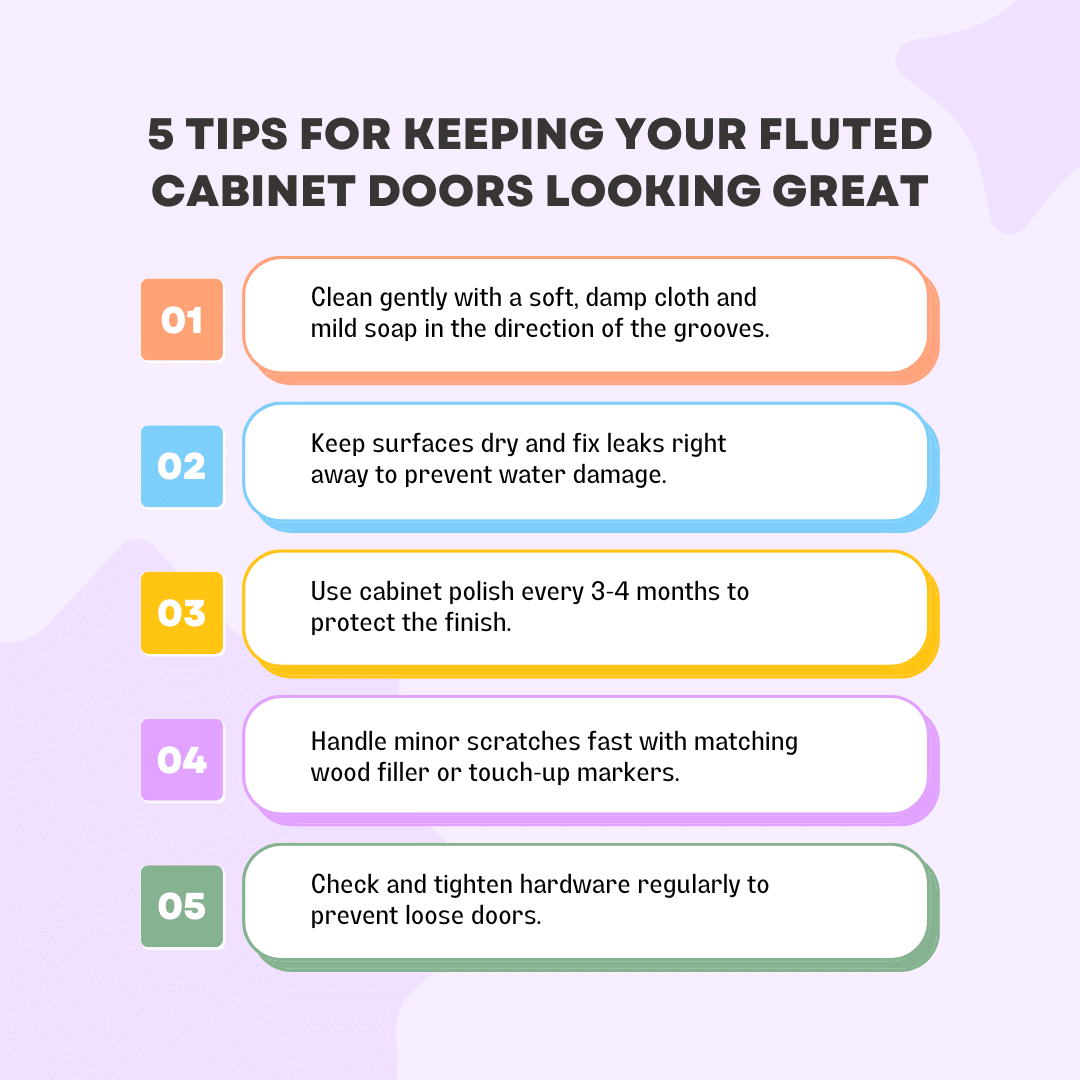
Conclusion
Looking to refresh your kitchen? I believe fluted cabinet doors are worth trying. After working with countless kitchen designs, I can say these textured beauties add something special to any space.
In this guide, I shared my tips for choosing, buying, and caring for fluted cabinets. Whether you pick them up from a local shop or order online, remember to match them with the right hardware and lighting.
Want to start small? Try adding fluted doors to your kitchen island first. Take care of them with gentle cleaning and quick fixes when needed.
Ready to take the next step? Head over to my other posts about kitchen lighting options that work perfectly with fluted cabinets.
Leave a comment below – I’d love to hear about your cabinet plans!
Frequently Asked Questions
What is the Most Expensive Cabinet Door Style?
Hand-carved, solid wood inlay cabinet doors top the price list. I’ve seen these custom pieces cost $1,000 or more per door.
Can Fluted Cabinet Doors Be Used in Kitchens and Bathrooms?
Yes! I’ve installed fluted doors in both spaces. They work well with proper sealing and regular care to handle moisture.
Are Fluted or Reeded Cabinets Hard to Clean?
Not really. From my experience, a soft cloth with mild soap does the job. Just clean along the grooves and dry right away.

